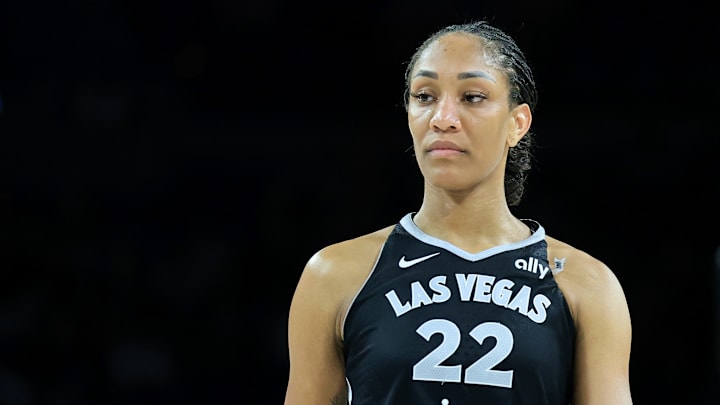According to Natasha Cloud, there will be at least 20 WNBA players in attendance at today's meeting to discuss a new Collective Bargaining Agreement (CBA). "We’re not f—-ing around. This is a huge CBA for us," Cloud told New York Post reporter Madeline Kinney. "We know our worth. We know our value. And this is us going and fighting for it." The trouble is, when it comes to a new CBA the league strongly needs to consider ownership restructuring, Alissa Hirsh wrote for the Chicago Sun-Times Thursday, beginning with the percentage owned by the NBA.
Natasha Cloud said she’s believes there’s going to be more than 20 players at tomorrow’s meeting, including four from the Liberty.
— Madeline Kenney (@madkenney) July 17, 2025
“We’re not f—-ing around. This is a huge CBA for us. We know our worth. We know our value. And this is us going and fighting for it.”
Cloud's sentiment has been echoed widely throughout the league by Satou Sabally, who announced via Instagram she will not play in the All-Star Game but will be in Indianapolis for the meeting, Syd Colson, Sophie Cunningham, WNBPA president Nneka Ogwumike, and more. There's a lot at stake when the current CBA expires at the end of October, and part of that begins and ends with the fact that the WNBA doesn't even own itself.
Who owns the WNBA? The answer is more complicated than you think
When the WNBA was first set up, the NBA owned all the teams. This was the case until 2002, when the NBA began to sell teams to independent owners. In 2025, WNBA ownership is split: the W owns 42% of the league, and the remaining 58% is owned by the NBA and an investment group established in 2022 (its members include Nike, Michael Dell, Linda Henry, Dee Haslam, Condoleezza Rice, Micky Arison and Laurene Powell Jobs — and some team owners, like the Mystics' Ted Leonsis, the Liberty's Joe Tsai, and the Fever's Herb Simon, are part of both groups).
This split ownership makes everything money-related more complicated for the WNBA. As the Sun-Times points out, that monster $200 milion-per-year media rights deal the WNBA secured in 2024 is fantastic on paper — but the reality is the league will get $84 million of that, and the rest goes to the NBA and to the investment group.
So that leaves the league's players arguing for their fair share of the that $84 million — a number that will still be impressive and impactful, but not quite as much as it would be if the WNBA received the entire $200 million instead.
Napheesa Collier, the vice president of the WNBPA, admitted to the Sun-Times that the negotiating the new CBA and getting a slice of that larger pie will be "really hard." She continued, "When an outside source owns the majority of your league, it’s either not going to get there, or it’s going to take a very long time for [us to be] making the kind of money we want to make."
How could the WNBA own more of the league?
Hirsh also proposes one way the WNBA could take charge of its own league, which in turn could allow the league to more appropriately pay players: by using some of the millions raised through expansion teams to buy more shares, thus becoming majority owners.
The problem? Apparently the WNBA has no intention of using expansion team funds to pay players at all. That's truly saying something, considering the Detroit, Philadelphia, and Cincinnati expansion teams are paying $250 million each to join — and it's not clear where that money is going if it's not into player resources and salaries.
